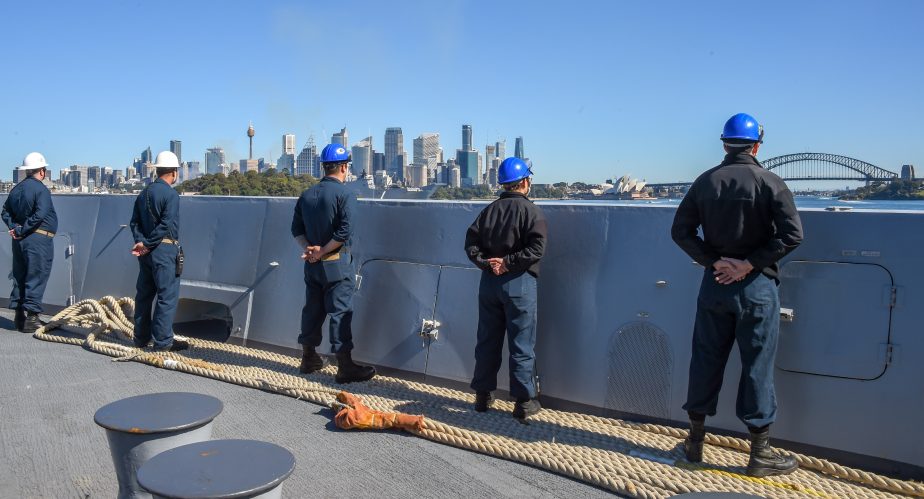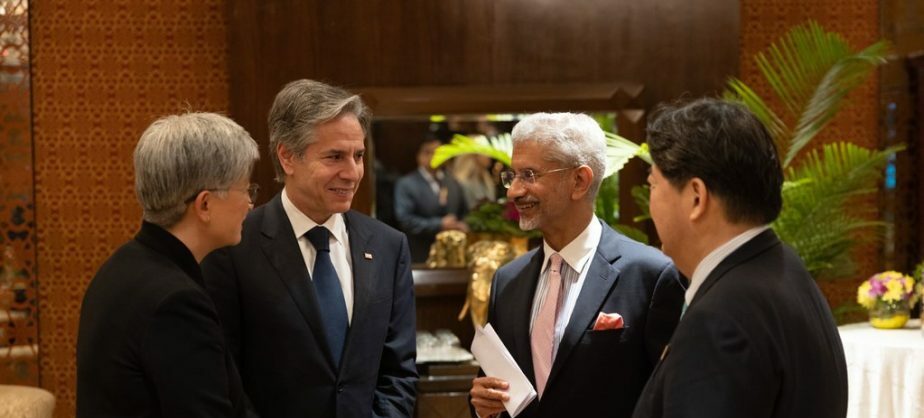Malabar Exercise Brings Quad Navies Together in Australia
THE DIPLOMAT
APLN member Rajeswari Pillai Rajagopalan wrote for The Diplomat, assessing the implications of the Malabar Naval exercise in Australia. Read the original article here.
The navies of Australia, India, Japan and the United States kicked off the 27th edition of the Malabar naval exercise off the coast of Sydney earlier this month. This is the first time that Australia has hosted the exercise, which began in 1992 as a bilateral naval exercise between the Indian and U.S. navies. The Malabar series has grown enormously in the last three decades in terms of scope, complexity, and the sophistication of the maneuvers undertaken by the partnering navies. This reflects the greater confidence and sense of purpose among the now-four participating countries.
The present exercise comes against the backdrop of a worsening security environment in the Indo-Pacific, with China and North Korea posing the most consequential challenges in the region. India is still involved in an active conflict with China on their mutual border. The missile and nuclear threat from North Korea for Japan is a live issue. In fact, the recent Japanese Defense White Paper said that “North Korea’s military activities pose an even more grave and imminent threat to Japan’s national security than ever before.” The white paper was vocal about the threats from China too, saying that “China’s current external stance, military activities, and other activities have become a matter of serious concern for Japan and the international community, and present an unprecedented and the greatest strategic challenge.”
The United States and Australia too have their own concerns about China, especially since Beijing has used various tools to restrict the strategic maneuverability of other major Indo-Pacific powers. The U.S. intelligence community told the U.S. Senate Intelligence Committee that the Chinese Communist Party continues to be the “most consequential threat” to U.S. national security, with CCP General Secretary Xi Jinping consolidating power in a third term.
Given the rapidly changing strategic scenario facing the region, all the four Quad/Malabar partners have a shared perception of the kind of Indo-Pacific region they want to see. This has also translated to a closer understanding of the strategic purpose of their interactions and how they will enhance operational efficiency through military engagements such as Malabar 2023.
A press release issued by Japan Maritime Self Defense Force (JMSDF) detailed the objectives of the Malabar 2023 exercise as improving interoperability with the navies of the four partnering countries in addition to augmenting the JMSDF’s “tactical capabilities.” An Indian Ministry of Defense press release stated that Malabar 2023 includes two phases – a harbor phase (from August 11-15) and a sea phase (August 16-21). The harbor phase included a number of activities such as “cross-deck visits, professional exchanges, sports fixtures and several interactions for planning and conduct of the Sea Phase.” The sea phase encompassed numerous “complex and high intensity exercises in all three domains of warfare, encompassing anti-surface, anti-air and anti-submarine exercises including live weapon firing drills.” Like Japan, the Indian press release also noted that the exercise is an “opportunity to the Indian Navy to enhance and demonstrate interoperability and also gain from the best practices in maritime security operations from its partner nations.”
According to a Japanese Ministry of Defense press release, the participating ships included JS Shiranui (IPD23 First Surface Unit); from the U.S. USS Rafael Peralta and USNS Rappahannock; from India INS Karkatta and INS Sahyadri; and from Australia HMAS Brisbane and HMAS Choules. In addition, surveillance aircraft such as the P-8s and special forces also participated.
During a press conference, Vice Admiral Karl Thomas, commander of the U.S. Navy’s Seventh Fleet, said that the exercise was not targeted at any country but added that “the deterrence that our four nations provide as we operate together as a Quad is a foundation for all the other nations operating in this region.”
While Malabar 2023 is the first time Australia is hosting the naval exercise, it is not the first time the Australian Navy has participated in the exercise. Australia had previously joined the 2007 Malabar exercise, with its guided missile frigate HMAS Adelaide undertaking naval maneuvers in the northwest Indian Ocean. But the 2007 exercise that brought together the Quad partners provoked China and in 2008, then-Australian Prime Minister Kevin Rudd called off Australia’s participation.
However, a lot has changed between Australia and China since, with relations worsening in recent years. In response, Canberra again sought to be part of the Malabar exercise, but New Delhi was not entirely comfortable with its return. In fact, in 2015, then-Australian Defense Minister Kevin Andrews said that Australia was keen to join India, the United States, and Japan in the Malabar exercise but New Delhi would not pay any heed to Canberra’s request.
Finally, following the Galwan clashes with China in 2020, and with no sign of a thaw in relations between India and China, New Delhi invited Canberra to be part of the Malabar exercise once more. This year’s edition is the fourth consecutive year that Australia has been part of the exercise. Since 2015, Japan’s maritime forces have also become a permanent partner of the Malabar series.
Part of the reason for these exercises is to send a message of common purpose to deter China. This purpose is possibly being served. But whether the four navies are significantly improving coordination and cooperation, which is another important purpose, remains a question only really to be tested in the event of a crisis or conflict.
Image: Sailors assigned to the forward-deployed amphibious transport dock ship USS Green Bay (LPD 20) stand at parade rest on the ship’s forecastle during a transit through Sydney harbor, August 11. Credit: U.S. Navy photo by Mass Communication Specialist 2nd Class Matthew Cavenaile




